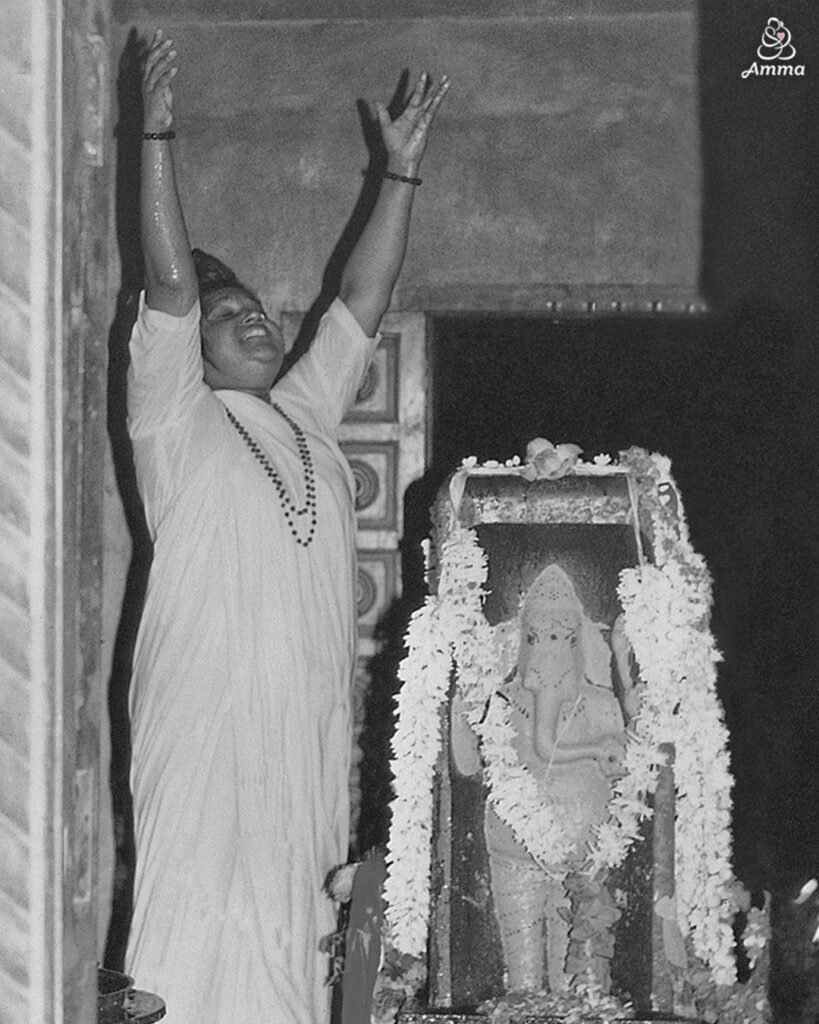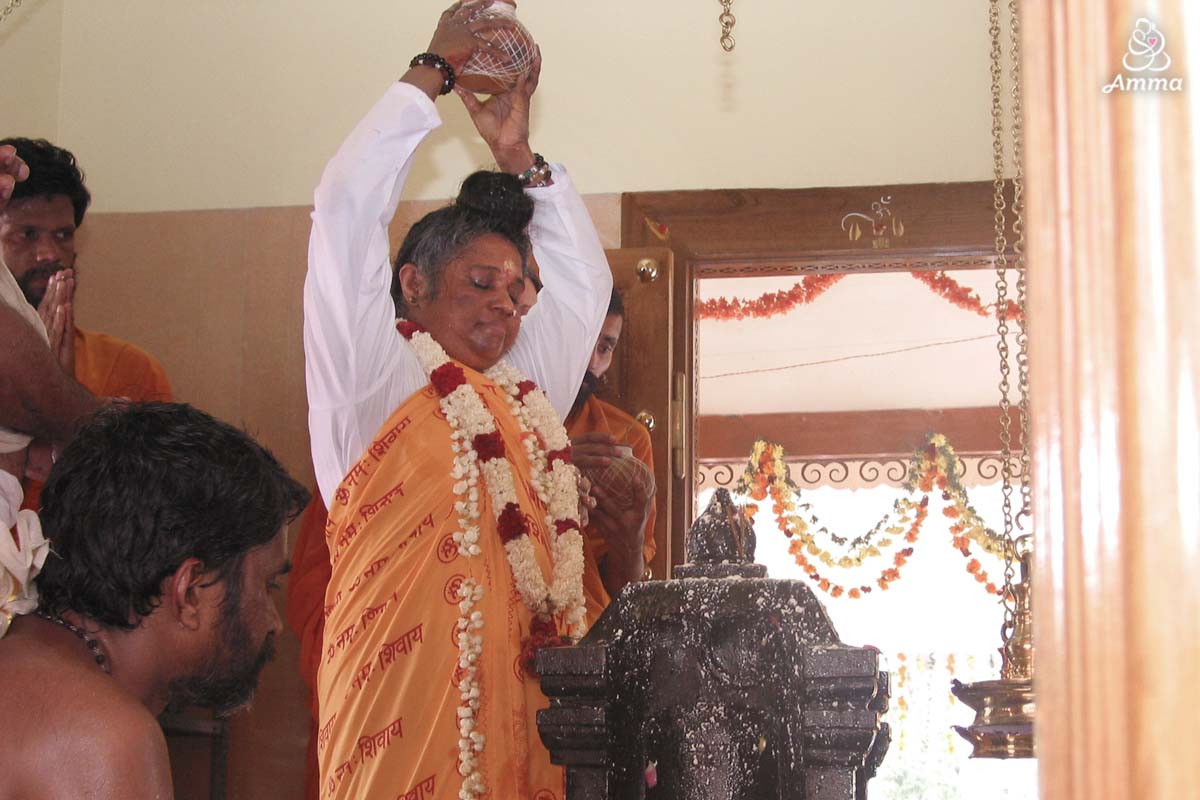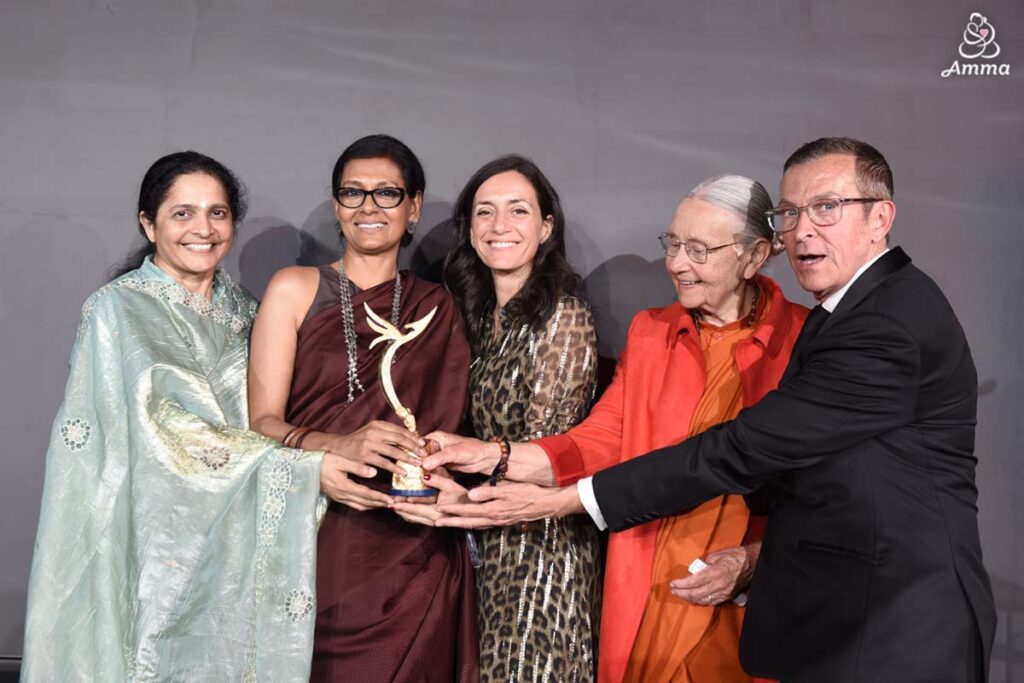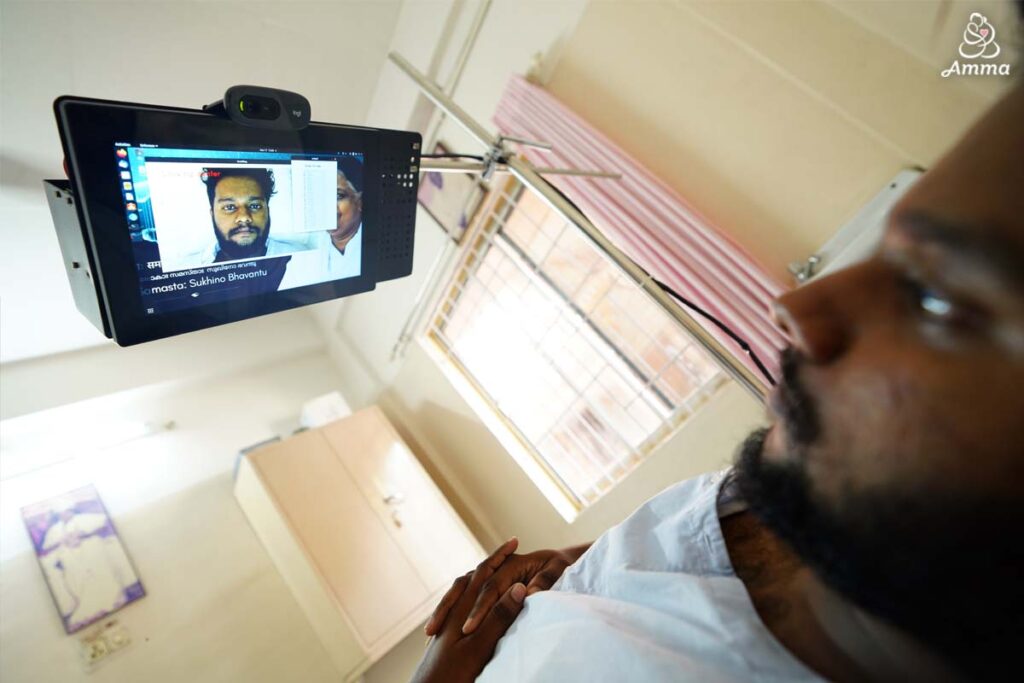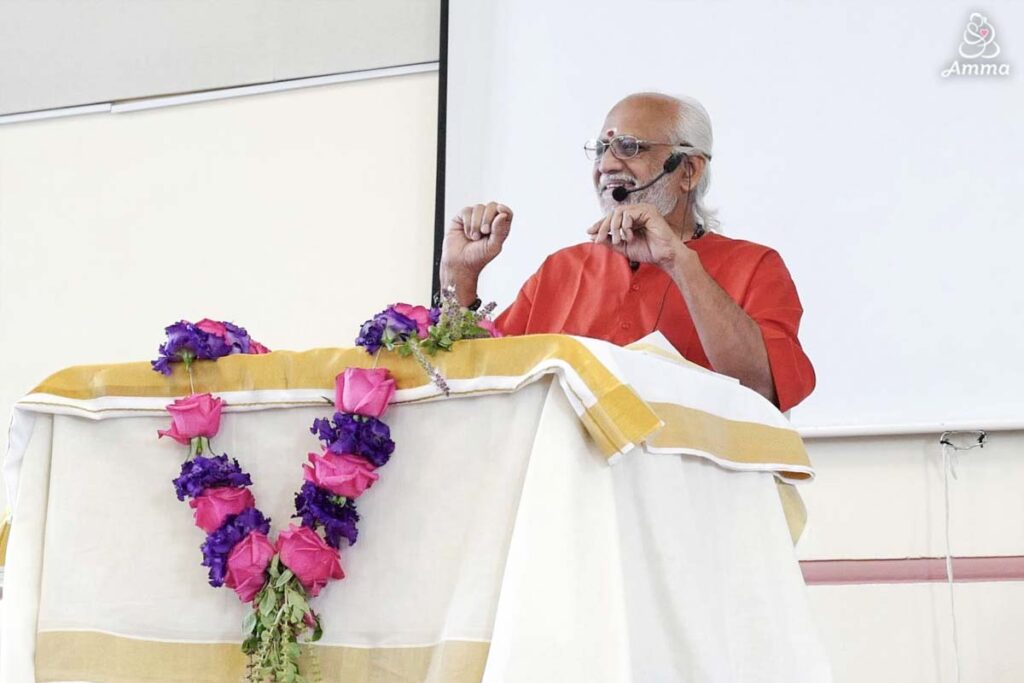Amma has departed Amritapuri for her first South India Tour since 2020, and many joyful hearts await her arrival at the first stop in Kerala’s capital of Thiruvananthapuram. The program begins with a festival at her Brahmasthanam Temple on February 8, 2025. In this feature article, we take a look at why Amma founded these unique places of worship that are open to everyone who arrives—people of all faiths, genders, and castes.
–
“A temple is like a mirror. Through it, we can see ourselves, cleanse the impurities within, and purify our hearts,” says Amma. This is the profound vision upon which she has established her Brahmasthanam Temples—sacred spaces designed not just for worship, but for inner reflection and spiritual transformation.
In 1988, Amma consecrated the first Brahmasthanam Temple in Kodungallur, Kerala through ancient rites of the Hindu faith. Since then, she has founded 20 more across India and one in Mauritius, Africa. In each of the 22 temples, Amma performed the prana pratistha (energy infusion) with a vision to make them vibrant centers of divine love for one and all.
“Pratishta means consecrating—not consecrating an idol in a temple, but seeing what is covering the divinity within us. The real pratishta of our deity must take place within our heart,” says Amma.
Her message before, during, and after any pratishta ceremony is always the same: “Divinity is a palpable reality for us to discover, and not within the four walls of a temple.”
One of the most revolutionary aspects of the Brahmasthanam Temples is Amma’s decision to appoint women as priests. In a society where temple rituals have traditionally been male-dominated, this step marked a significant shift, promoting gender equality and empowering women to take powerful roles in spiritual leadership.
Moreover, these temples are open to people of all castes and religions. Everyone is welcome to pray and participate in the rituals, reflecting Amma’s inclusive approach to spirituality. According to her, the rituals performed at the Brahmasthanam help to alleviate the negative effects of one’s past actions (karma), offering a path towards inner purification and peace.
At the heart of every temple is a unique idol carved from one stone to depict four deities: Shiva as the father, Devi as the mother, Ganesha as their elder son, and Murugan as their younger son. Traditionally in temples, a single statue will represent just one aspect of the divine. But Amma decided to merge four divine beings into one as a symbol of unity in diversity. Even in the multiplicity of the world before our eyes, there is an underlying oneness.
The symbolism extends further through the details of this divine family. Shiva rides the mighty bull Nandi and Devi is accompanied by a fierce lion. Ganesha, the deity with an elephant head, is paired with a humble mouse and Murugan is represented as a serpent. In the natural world, these creatures might be considered adversaries, yet here, they coexist peacefully.
The Brahmasthanam Temples stand as a living embodiment of the ancient Indian philosophy of Vasudhaiva Kutumbakam—“The whole world is one family.” Through these sacred spaces, Amma reinforces the timeless Vedic prayer, Lokah Samastah Sukhino Bhavantu—“May all beings everywhere be happy and free.” It’s a message that transcends religious and cultural boundaries, inviting people from all walks of life to embrace harmony and compassion.
Amma also conveys the idea that all names and forms represent different aspects of the same ultimate reality. The very name Brahmasthanam hints at this universal truth—the Parabrahma, or Supreme Consciousness, that encompasses all existence. It is a space where devotees are invited to move beyond superficial divisions and connect with the divine essence that resides in all.
There is one final unique aspect of the Brahmasthanam Temples that helps devotees realise this knowledge. Unlike many traditional temples where people pay for others to perform rituals on their behalf, Brahmasthanam temples encourage the worshippers to perform pujas themselves.
This rare opportunity allows them to engage directly in the ancient rites, fostering a deeper connection with the divine. In this way, everyone is empowered with a pathway to look within and find the universal peace that already dwells within their hearts.
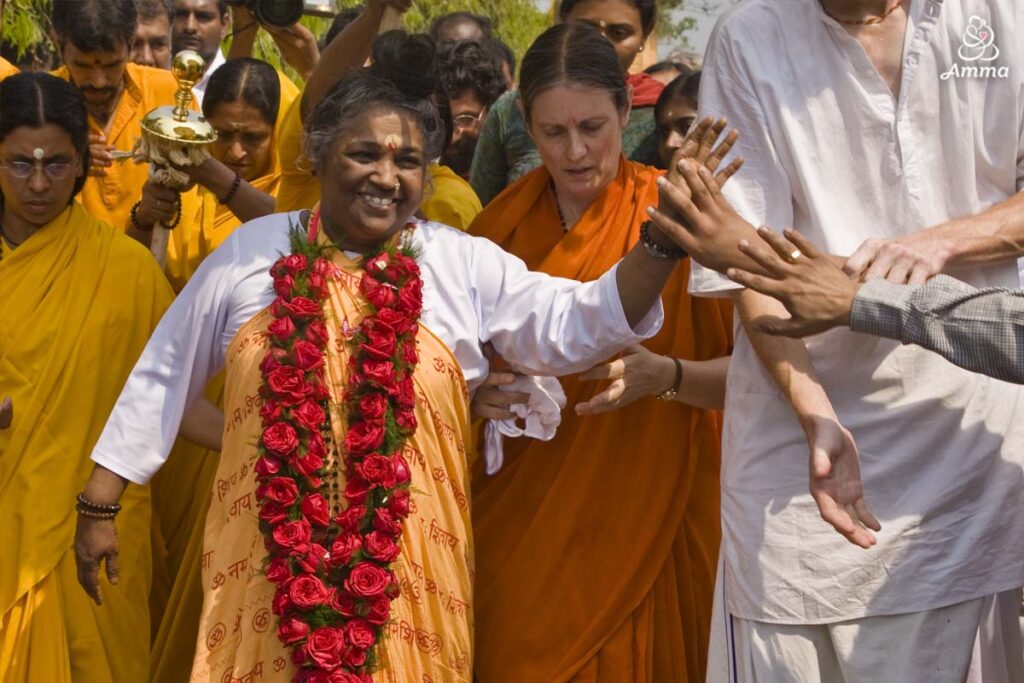
Consecration Dates for the 22 Brahmasthanam Temples
- Manjeri – 23 April 2015
- Kannur – 5 May 2011
- Kolkata – 29 March 2008
- Mangalor – 18 February 2008
- Thrissur – 10 April 2005
- Kochi – 25 April 2003
- Bengaluru – 12 February 2003
- Hyderabad – 24 February 2002
- Coimbatore – 2 May 2001
- Mananthavady – 28 February 2001
- Mysuru – 18 February 2000
- Thalassery – 22 April 1999
- Palakkad – 20 January 1999
- Mauritius – 2 April 1998
- Madurai – 5 April 1995
- Delhi – 3 March 1995
- Mumbai – 12 February 1995
- Kozhikode – 18 January 1993
- Pune – 15 April 1992
- Thiruvananthapuram – 16 February 1992
- Chennai – 6 May 1990
- Kodungallur – 21 April 1988
